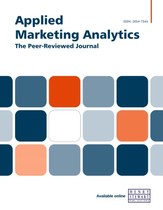Using conjoint analysis across the marketing value chain
Abstract
Conjoint analysis, best known in its choice-based form, has become one of the most commonly applied techniques in marketing research since it was introduced in the early 1970s. Its popularity stems from its ability to provide a systematic, experimental framework for collecting and analysing data on how product attributes and their levels influence consumer preferences and decision making. By simulating real-world trade-offs, conjoint analysis generates managerial insights such as the relative importance of product features, consumers’ willingness to pay and predicted market shares, making it an essential tool for product design, pricing strategies and competitive positioning. Methodological advances have enabled researchers to apply conjoint across the entire marketing value chain, as well as to deal with the associated challenges, such as how to deal with (too) many attributes, which type of experimental design to use, how to minimise hypothetical bias, whether to include benefits or other meta-attributes, how to account for non-compensatory decision making, how to account for consumer budgets, etc. This paper discusses the challenges encountered when applying conjoint across the marketing value chain, and the methods best suited to manage these challenges. In this way, the paper provides a concise user’s guide to making good methodological choices without getting drowned in the vast literature on this topic.
The full article is available to subscribers to the journal.
Author's Biography
Marco Vriens is CEO of Kwantum, an analytics and AI-driven brand intelligence firm. He has a Master’s degree in psychology and a PhD in marketing analytics and is an expert in brand research, analytics and marketing research. He is a recognised authority in brand density and holistic conjoint analysis. He is the author of ‘The Business of Marketing Research’ (2020), ‘From Data to Decision: Handbook for the Modern Business Analyst’ (2023) and ‘Handbook of Marketing Research’ (2006).
Felix Eggers is Chief Consumer Science Officer at Kwantum and a full professor at the Copenhagen Business School. His research has a methodological and a managerial focus. Managerially, he is primarily researching topics about digitisation, such as digital business models. Methodologically, he focuses on quantitative research methods about consumer decision making, such as conjoint analysis and discrete choice experiments. He is also a collaborator in the Measuring the Digital Economy Initiative and the development of GDP-B.
Citation
Vriens, Marco and Eggers, Felix (2025, March 1). Using conjoint analysis across the marketing value chain. In the Applied Marketing Analytics: The Peer-Reviewed Journal, Volume 10, Issue 4. https://doi.org/10.69554/EZJJ7882.Publications LLP
